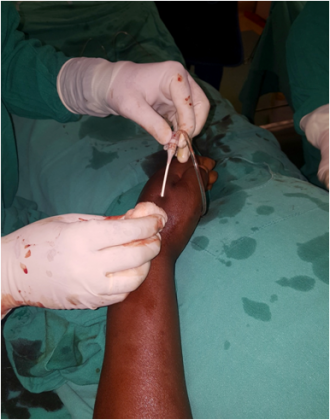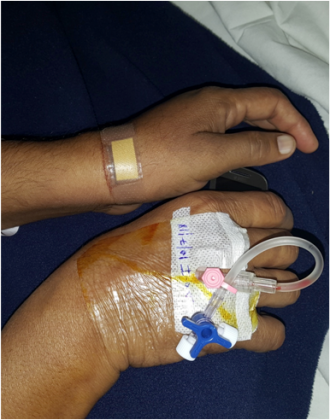- Home
- Editorial
- News
- Practice Guidelines
- Anesthesiology Guidelines
- Cancer Guidelines
- Cardiac Sciences Guidelines
- Critical Care Guidelines
- Dentistry Guidelines
- Dermatology Guidelines
- Diabetes and Endo Guidelines
- Diagnostics Guidelines
- ENT Guidelines
- Featured Practice Guidelines
- Gastroenterology Guidelines
- Geriatrics Guidelines
- Medicine Guidelines
- Nephrology Guidelines
- Neurosciences Guidelines
- Obs and Gynae Guidelines
- Ophthalmology Guidelines
- Orthopaedics Guidelines
- Paediatrics Guidelines
- Psychiatry Guidelines
- Pulmonology Guidelines
- Radiology Guidelines
- Surgery Guidelines
- Urology Guidelines
Delhi Doctors adopt new technique-perform angiography via finger artery

Led by Dr. Tapan Ghose, Director & Head, Cardiology, Fortis Flt. Lt. Rajan Dhall Hospital, Vasant Kunj (FHVK), a team of doctors of Delhi have adopted the novel technique of performing angiography via the thumb artery. Traditionally, angiographies are performed through the wrist or groin; however, Dr Tapan Ghose and his team have performed finger angiographies on as many as 51 patients.
Mr. D S Mathuria, 47 years of age, had been experiencing angina (chest pain caused by reduced blood flow to the heart) for the last 3 months. A thorough medical evaluation and angiography through the distal radial revealed that he had coronary artery disease and double vessel disease. He was treated successfully. Mr Vinod, 69 years of age, presented with coronary artery disease, diabetes, and peripheral vascular disease. In both cases, an angiography needed to be performed. Dr Tapan Ghose and his team performed the angiography through the left thumb artery – making the procedure convenient for the patient.
Dr. Tapan Ghose, Director& Head, Cardiology, Fortis Flt. Lt. RajanDhall Hospital, Vasant Kunj said, “The procedure and medication involved in performing angiographies, whether it is through the wrist, groin or finger, is the same. When it is performed through the finger, it is known as ‘Left Distal Radial Angiography’ or ‘the anatomical snuffbox approach’. The benefit of choosing this route over traditional procedures is that it is less time consuming and painful and patient-friendly. The rate of recovery is faster, there is no loss of radial pulse, bleeding is negligible, 0% chances of blood transfusion.”

Ms. Mangla Dembi, Facility Director, Fortis Hospital Vasant Kunjsaid, “Our doctors are always looking to adopt innovative techniques that will be more beneficial and convenient for the patient. We are constantly striving for patient centricity. Aided by world-class infrastructure and technology, we deliver our best to each patient every day. Last 12 years we are doing angiography and angioplasty through the radial artery is 90% of cases. This year our team of Cardiologists have gone one step forward to give better patient comfort and safety by offering “anatomical snuffbox approach”.

An angiography is used to remove blockages from the heart. Finger angiographies are preferred when performing coronary angiogram and interventions as they are safe and effective. Shorter hospital stay, patient comfort, and health benefits are a few of the added benefits of a finger angiography. Using this approach doctors are now able to achieve near-perfect procedural success and will have no access-site complications, including no radial artery occlusions, less blood loss, 0% chances of blood and blood product usage. Additionally, Left radial is available for future use in AV fistula or bypass graft if required.

Disclaimer: This site is primarily intended for healthcare professionals. Any content/information on this website does not replace the advice of medical and/or health professionals and should not be construed as medical/diagnostic advice/endorsement or prescription. Use of this site is subject to our terms of use, privacy policy, advertisement policy. © 2020 Minerva Medical Treatment Pvt Ltd